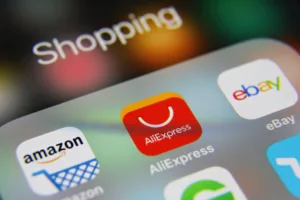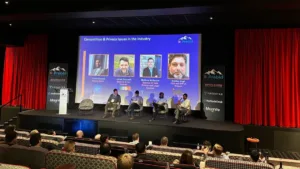By OJ Deady, Managing Director, TwelveA.M.
Black Friday is behind us, we’re days away from Christmas, and the high-spend shopping season is upon us with retailers enticing us in with their now obligatory festive ads.
And while luxury brands are putting out dedicated Christmas campaigns, they are less of a focal point in their marketing calendar – which strikes me as interesting. In the biggest shopping period of the year, are some things automatically considered unobtainable?
For decades luxury fashion – from accessories and clothes to skincare and perfume – has been heralded as a niche purchase, inaccessible to the common man. But times have changed and, despite the cost of living crisis, more people are shown to be prepared to splash out on luxury goods.
We are already seeing high end brand marketers embrace less expected advertising routes. Where luxury ads were once seen exclusively in glossy magazines, national broadsheets and on major OOH sites, today there is rapidly increasing demand for digital advertising campaigns, predominantly across social media and even seen most recently in surrealist campaigns with the rise of AI. While some may consider social media as a ‘cheap alternative’ to big ticket advertising, I’m afraid to say it’s actually where a huge proportion of their (existing and potential) audience lives.
The ever changing landscape of social is what has held back many luxury brands from developing strategies specific to each channel. Their advertising heritage often doesn’t translate to social so it can take time to develop and understand what their purpose is for said channels.
Social media has its own audience and the Venn diagram of potential new customers may not have a huge overlap between Instagram followers and readers of the FT’s How To Spend It magazine, for example. The nature of their USP – and price point – will mean it’s important to retain an element of exclusivity in their creative, but with growing numbers of people now prepared to fork out for luxury goods, they would do better to embrace this growing audience.
More often than not, social will be the first exposure to a brand for a new customer so it’s key that the content published and communication is native to the platform as well as being exciting and engaging.
We’re not strangers to creating social media content for high value businesses, and there are a few rules that should be adhered to if an agency is to deliver the kind of ROI for their clients that will convince them it was more than worth engaging alternative channels.
- It’s about more than beautiful people in beautiful locations.
While some high-end brands may be adapting to the online content-game, it’s just not happening quickly enough – there needs to be less melancholic, stern-faced movie stars and more narrative driven content. Still beautifully shot, just more accessible.
Releasing artwork of the same Hollywood star in a very slightly different pose for every ad on every platform over three years might represent value for money for the brand who has paid top dollar for the celebrity endorsement, but it will likely mean consumers stop truly seeing the ad. Over exposure will mean they’ll become blind to it and your investment will lose value.
- Tell a story
One way to truly counter this ad-blindness, and even earn some emotional investment from audiences, is to take them along on a journey with you. By creating a narrative in your advertising, by telling a story either in one ad or over a series of releases, you create something people can relate to, or get on board with. This is particularly true if you employ recognisable faces – not necessarily the biggest movie stars, but simply stars from the latest series, publication or gallery exhibition who align with your brand image.
- Explore different formats
The joy of social is people can engage with your content in whichever format suits them at that moment. Sound on, sound off, video, live, there are ever increasing opportunities, and while every art director has a vision for how something will be consumed, more often than not they don’t have ultimate control once the work is out there unless of course the strategy has been developed from conception with the agency and output in mind. Video is the preferred format, and the most engaging, but a blend is often what we are looking to achieve to sustain the frequency and continued growth of a brand’s channel.
It will always be key to maintain a high levels of production, and the premium look and feel of what is being produced can’t be overlooked, but finding an agency that produces everything in-house means work can be created to the standard that the brands and audiences expect from luxury products, but on a budget that those keen to test the waters consider reasonable.
- Make it aspirational
Arguably the very point of luxury advertising is to make these products aspirational – to plant a seed of desire in people that will see them save up every month for a particular dream item. After all, that’s what makes high value items so special. But there is a fine line between something being aspirational and being unobtainable, and that is where brands must tread carefully.
There is absolutely a modern audience out there, keen to splash out on a little bit of luxury, and marketers must keep those people in mind when planning their advertising. They may not spend big regularly, but who knows what disposable income that ambitious young person, who has diligently saved up for months, may have in a few years time. That loyalty will be seeded somewhere, and ensuring you are connecting with this audience will be crucial in the long term.
By harnessing a shift in attitude, and embracing some tried and tested advice for stepping into social, luxury brands can open their marketing to a large proportion of the market while still maintaining the stylistic, high end values for which their heritage advertising is known.







